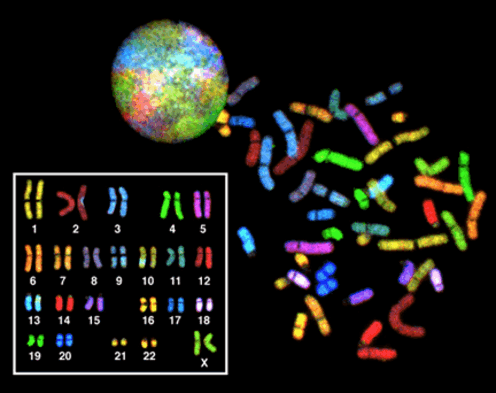
An article published this week in Nature Biotechnology may require me to make a few changes to next week’s lectures on Mendelian genetics. An international group of geneticists have found people who have genetic mutations for severe childhood diseases but remain healthy.
This means that what I teach my first year biology students at University is demonstrably wrong. Mendelian genetic diseases are caused by alterations to the DNA code of a single gene. Depending on the pattern of inheritance (dominant or recessive), one or two copies of a particular mutation are all it takes to ensure a lifetime of illness.
What is a Mendelian genetic disease?
That’s the simple message we teach about cystic fibrosis, for example, although we know that it is a bit more complicated than that. For example, there are more than 1800 different mutations that can cause cystic fibrosis, and some of these produce different symptoms. The severity of those symptoms can vary as well, so no two people with this genetic condition have exactly the same journey.
However, all of those people will have a mutation in the same gene, known as CFTR, which stands for cystic fibrosis trans-membrane conductance regulator. This gene codes for a protein that transports molecules (ions) across cell membranes, and it is critical to good health.
Ironically, we often name genes for the things that go wrong when they are broken, rather than for the function they perform in healthy individuals. This is because we only recognised the gene as essential to our health when we found individuals in whom those genes were not working. Thus the “cystic fibrosis” gene sounds like something you don’t want to have, when in fact what you want is a functional copy of the membrane protein CFTR.
Geneticists thus think in a kind of backward way about genes and how they work. I often find my students confused about the way we use terminology and I recognise that this is because we identify genes by what happens when they are not working properly. This would be like calling your computer a “frustration generator” – it does not begin to explain what happens when it is working well.
Finding a needle in a haystack?
The resilience project had a bold idea – to look for people who carried a mutation that we think invariably causes incurable genetic disease who nevertheless do not have the disease. The researchers were able to do this by using data-sets that were collected by other people for other reasons. They would never have been able to get the project off the ground otherwise as they were challenging a long held paradigm.
By accessing several large data-sets they were able to look at the genes of 589,306 people, where they found 15,597 mutations associated with 163 diseases. The diseases they were looking for were ones that are usually detected in childhood, have a simple genetic cause and for which there is no known cure. Given that all the people in the data-sets were over 18 years old, the assumption was that these individuals would know by now if they had a particular genetic disease.
After applying a range of filters designed to remove false positives, the researchers found 13 examples of individuals who had a mutation that should make them sick who were nevertheless not sick. There were eight different diseases on the list: three mutations for cystic fibrosis, three mutations that cause atelosteogenesis, two for Smith-Lemli-Opitz syndrome, one for Pfeiffer syndrome, and four other conditions that are both rare and difficult to spell.
Special people exist, but we can’t find them
The authors rightly suggest that potential cures for these conditions are more likely to follow research on such individuals, in which we might identify factors that provide protection from the symptoms. One might think that the next step is to lure those 13 people into a hospital or laboratory for a thorough examination.
Unfortunately, the retrospective nature of the study prevents this. Each database had its own process for getting permission so that people who donated blood or saliva for gene sequencing either cannot be identified or cannot be contacted due to quite reasonable regulations about privacy and consent.
So this study is a proof of concept. It is also an example of thinking outside of the box. Knowing that there is more than a 20 in a million chance that a genetic mutation will not inevitably lead to disease means that there is now a new source of hope.
Further research will no doubt follow, but in the meantime I will be modifying my lectures next week. Mendelian genetic diseases are no longer inevitable, proving the long standing rule of science that there are exceptions to every rule.
